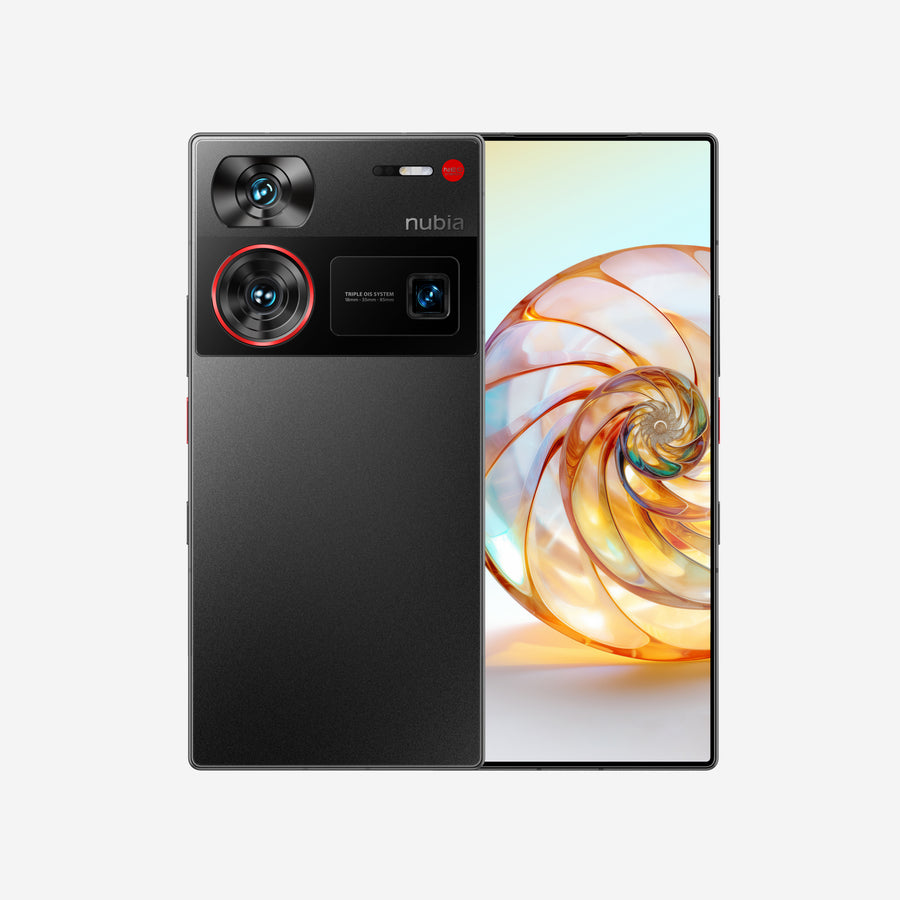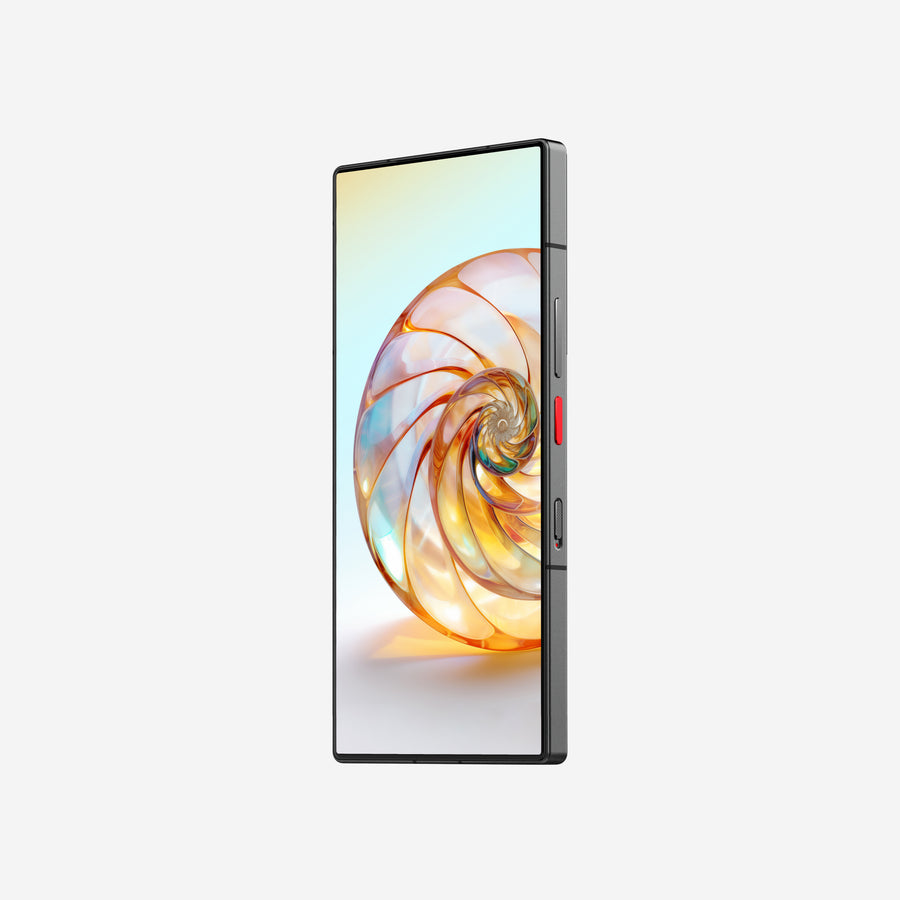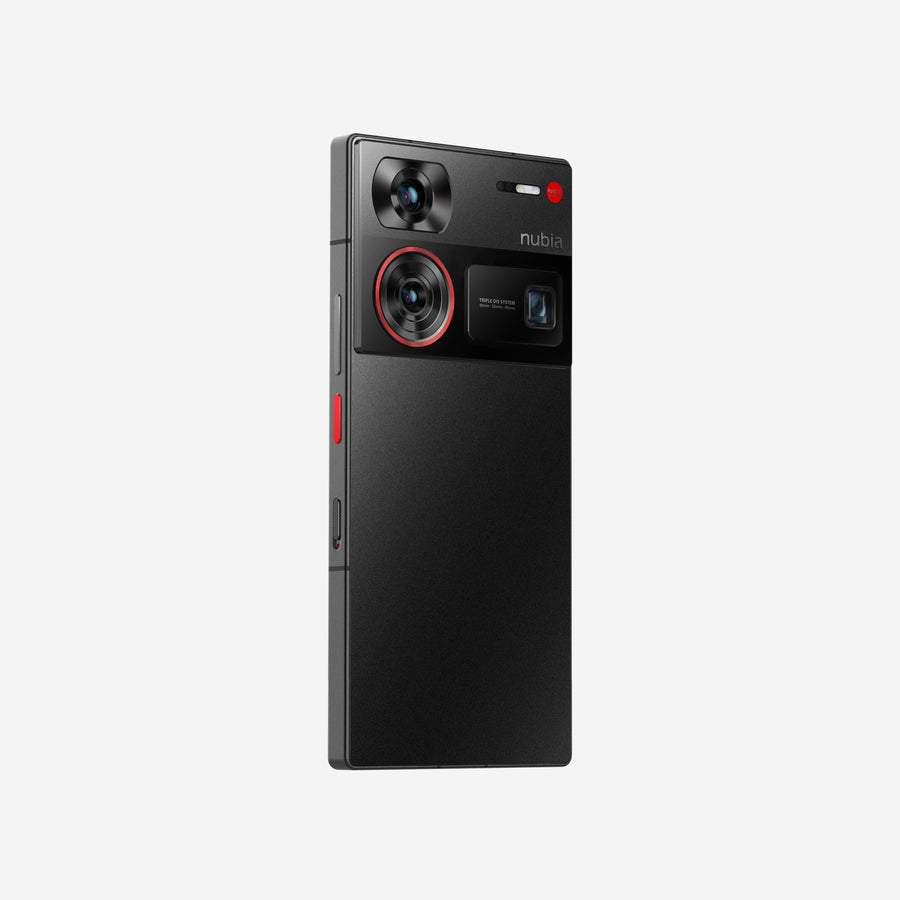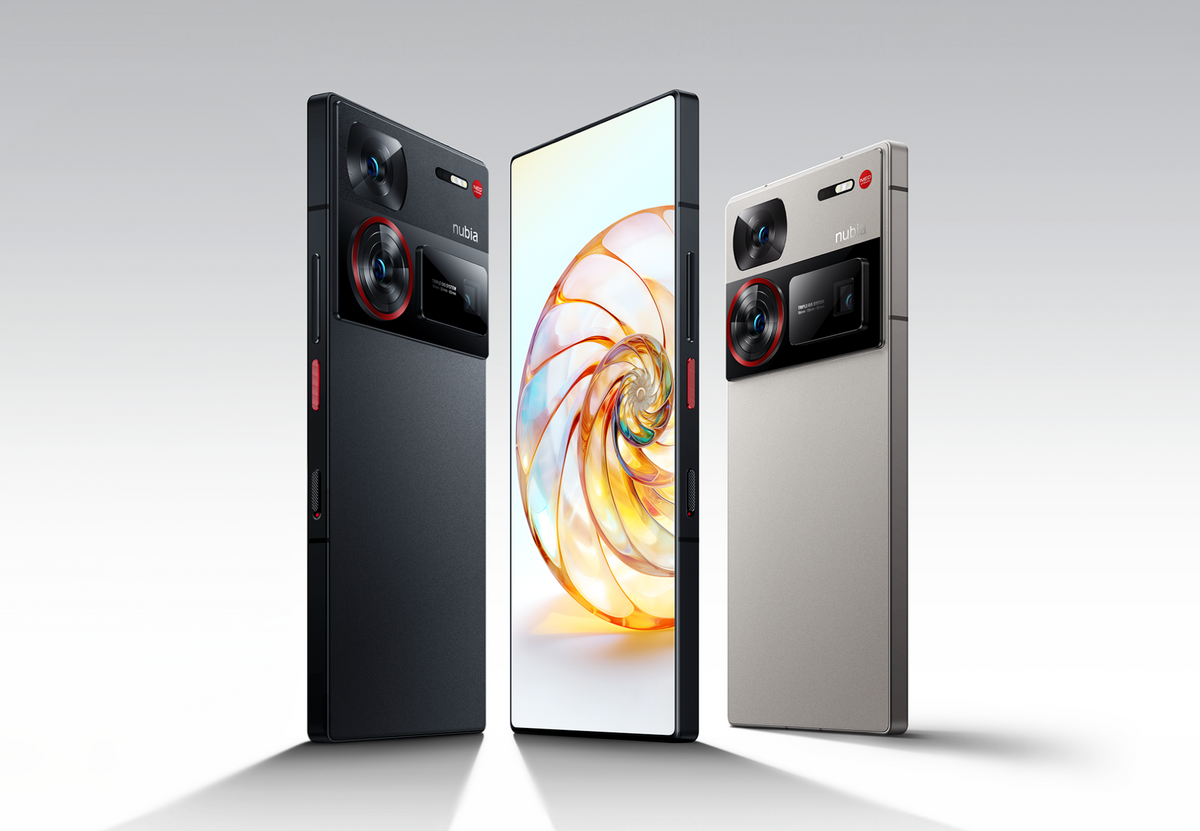The Nubia Z60 Ultra, a smartphone that isn't currently available in India and isn't going to be anytime soon, was given to us lately. The phone's manufacturer, ZTE, exited the Indian mobile market almost eight years ago. The Nubia Z60 Ultra Starry Night model, which sports 512GB of storage and 16GB of RAM, was sent to us from China. For those who reside in an area where the phone is sold or are interested in importing it to India, we tested it out and wrote a review.Our comprehensive analysis helps you determine whether the phone is worth the CNY 4,699 (about Rs 54,700) price tag for the model we tested.
Design & Display:
Inspired by Van Gogh's "Starry Night" artwork, the Nubia Z60 Ultra that we received was the Starry Night Collector's edition model. It creates a 3D star appearance without the need for glasses by microetching a starry sky into the glass and combining it with improved technology overlays.
Because it is so gaudy, this design is not suitable for everyone. Therefore, choose the color selections in black or silver if you like a minimalist appearance. Nonetheless, the Starry Night model might be your first choice if you're looking for a distinctive style. The pattern glows as soon as light hits it, while the reverse has a somewhat matte surface.

The smartphone camera design is nothing like what we have seen in the past. Three cameras total—two positioned in a blue stripe adjacent to one another and a sensor in the upper left. The word "Starry Night" appears on the bottom half, while the Nubia branding is located at the top right with an LED flash next to it. The crimson circle around the primary camera sensor lends a subtle finishing touch to the overall design. The power button is red in color and has a distinct finish, demonstrating the company's attention to detail.
Additionally located on the right is the volume rocker, and a switch that resembles the alert slider on OnePlus phones is located just below the power button. The user may program this switch to do a number of different things, such turning on the flashlight and changing the sound settings, among other things.
The device has a great overall feel and appearance, and its sides are flat. There is, however, a drawback that may or may not be subjective. Not everyone may find the smartphone to be very comfortable to use due to its thickness and weight. ZTE has supplied a plastic case within the box, albeit it could be a little slippery to use. Although it doesn't cover the edges, this plastic case adds heft to the smartphone and slightly reduces its slickness, thus it's not the ideal protective option.
Speaking of what's in the box, ZTE went above and beyond by including two chargers (one for China and one for international markets, each with a different connection), two blue USB-A to USB-C cables, and a case. The standard two-pin charger can handle up to 80 watts, while the charger designed for worldwide usage has a maximum capacity of 65 watts.
We were really pleased with the design overall because of its originality and other touches that added charm. It is undeniably striking in every way and has one of the greatest smartphone designs we have seen to date.
A 6.8-inch Full-HD+ OLED display (2480 x 1116 pixels) with a refresh rate of 120 Hz, an immediate touch sampling rate of up to 1200 Hz, a 10-bit color depth and 100% DCI-P3 color gamut, a brightness of up to 1500 nits, DC dimming, and 2160 Hz PWM dimming is located in front.
Users will have to settle for FHD+, but we would have preferred a QHD+ resolution for the display. This panel's vivid reproduction of precise colors and excellent contrast levels is impressive. Both the brightness levels and viewing angles are respectable. Although it isn't as brilliant as the Galaxy S23 Ultra, it can still be used in direct sunlight.

Additionally, because of the under-display camera and the very tiny bezels, you get an entirely immersive experience free from interruption.
It also has drawbacks, though. Netflix may not provide the best flagship-level watching experience because it does not support HDR. Furthermore, it does not support L1 and is currently operating at the Widevine L3 level. There are no other issues with the panel to be concerned about.
Performance & Software:
With up to 16GB of LPDDR5X RAM and up to 1TB of UFS 4.0 storage, the ZTE Nubia smartphone rivals the highest-end flagships of 2024 thanks to its Snapdragon 8 Gen 3 SoC. The Z60 Ultra performs just as one would expect: flawlessly. Heavy games like Modern Warships, Call of Duty Mobile, and others run flawlessly and haven't caused any problems in regular use. During prolonged playing periods, it does grow warm, but never too hot.
The whole experience is quick, with all of the animations flowing well. In relation to animations, they are smooth but not perfect. Like FunTouch OS, they are erratic and have their own peculiarities, much like Vivo's MyOS 14 software, which is based on Android 14 and runs on the Z60 Ultra.
You'll see the phone stuttering in the software. In contrast to skins like One UI, ColorOS, and OxygenOS, the experience isn't very solid. During our use of the device, there were a few glitches that we discovered. Occasionally, Android Auto would fail to establish a connection with the vehicle, and the maps would stop functioning in Picture-in-Picture mode and display a black window in its place. Furthermore, certain Chinese applications had the ability to be deactivated, while others did not.
Please keep in mind that disabling applications connected to the Theme Store may disable some of the phone's customization options, including certain dynamic effects. In addition, there is a glitch that prevents the phone from utilizing its maximum capacity for battery backup when it is idle, which we will discuss later.
There are several customization options available. Many always-on display styles, typefaces, notification effects, color and form schemes, fingerprint animation styles, and more are included in this. The pace at which the app opens and closes may also be adjusted. In addition, the device allows you to customize the lock screen, change the wallpaper, and select your own custom colors.
Other essential and practical functions are also included, such bypass charging, which allows you to play games on a plugged-in device by sending power directly to the CPU rather than the battery. Mistouch avoidance, gestures and movements, and a plethora of additional features are also included.
One of the most common queries regarding companies like ZTE and Huawei is whether or not they support Google Services. We are pleased to announce that Nubia provides a dedicated switch in the settings app for the Z60 Ultra that allows Google services. Similar to a smartphone marketed worldwide or in India, as soon as you switch it on, Google Mobile Services (GMS) is activated and a Google Play Store icon appears in the App drawer from which you may download whatever apps you desire.

An in-display optical fingerprint sensor is available for security, and it functions rather well. It is both rapid and accurate. It is currently running the December 2023 security patch as of the time this review was written. Additionally, ZTE's Z60 Ultra has a defined software update strategy, which causes several parts of its overall software performance to lag behind those of competitors. Given the history of the brand's flagships, which also indicates that Nubia devices don't receive upgrades the quickest, you should see Android 15 on the Z60 Ultra.
Even in India, connectivity performance—including Bluetooth, Wi-Fi, and mobile data—remained at its best.
Rechargeable batteries:
6000mAh (typ) capacity battery
A 6000mAh battery and 80W rapid wired charging support the smartphone. Wireless charging would have been a nice feature, but it isn't supported. Nevertheless, the quick cable charging rates more than make up for that; with the 65W charger that came with the package, charging the phone from 15% to 100% took just 25 minutes.
Despite having a 5000mAh battery, the iQOO 12 with the Snapdragon 8 Gen 3 beat both its predecessor and rivals in terms of battery life. You would anticipate the phone to easily last two days with a 6000mAh capacity. That wasn't the case, though. The gadget drained the excessive battery while in standby because of a software issue that prohibited the battery from operating at its maximum capacity. Every night when the phone was in standby mode and the Always-on display was turned off, we lost between 12 to 15%. Phones should ideally lose between 1 and 3%, thus we were dissatisfied with the Z60 Ultra's statistics.
A 6000mAh cell is a large battery, and we expected a lot from it. But even with combined online browsing, phone conversations, music streaming, and Wi-Fi and mobile data usage, it could barely last us a day and a half. We were able to use the screen for around 7 hours, which is respectable but not the greatest given the size of the cell. Comparing this battery life to that of the iQOO 12, we can see that the Nubia Z60 Ultra can hold a lot more power.
Cameras:
The 50-megapixel 35mm Sony IMX800 sensor with OIS and an f/1.59 aperture is the focal point of the Nubia Z60 Ultra optics. It comes with a 64-megapixel 85mm telephoto camera with OIS and a 50-megapixel 18mm wide-angle camera sensor with an f/1.8 aperture, OIS, and autofocus. An in-display 12-megapixel camera is available for recording videos and taking selfies.
There is a discernible color shift in wide angle images compared to primary sensor shots. The overall tone of these photos is considerably improved, but the dynamic range still needs improvement. Positively, the phone maintains quality when taking wide-angle photos and effectively manages edge distortion. Rather of having strong contrast, the colors in both conventional and wide-angle photographs are closer to nature.

Natural colors and precise details are preserved in portrait photography. As you can see, it's not easy to capture the red hue of the Galaxy S23 Ultra; in fact, I've seen smartphones make red appear far more vibrant and artificial. The Nubia Z60 Ultra handled it pretty well, accurately representing the device's color and appearance in real life. Additionally, the edge detection is precise. The dynamic range is suddenly too high with ordinary 3x optical pictures, although the images still seem respectable in this regard in terms of color and detail.
Images with artificial and low lighting also had well-balanced colors and a great degree of eye-accessible detail. You may just enlarge the image to see how effectively the phone sharpens and captures even the finest details. The phone performed admirably at night as well, and it was astounding to observe that there was no noise in the pictures.
Last but not least, the selfies are just plain awful. The colors are heavily faded, and they are very soft and fuzzy. The gadget has trouble taking passable selfies even outside, so you can only image how bad things would be in low light. It works great for video chats, but don't expect it to perform well for taking pictures.
